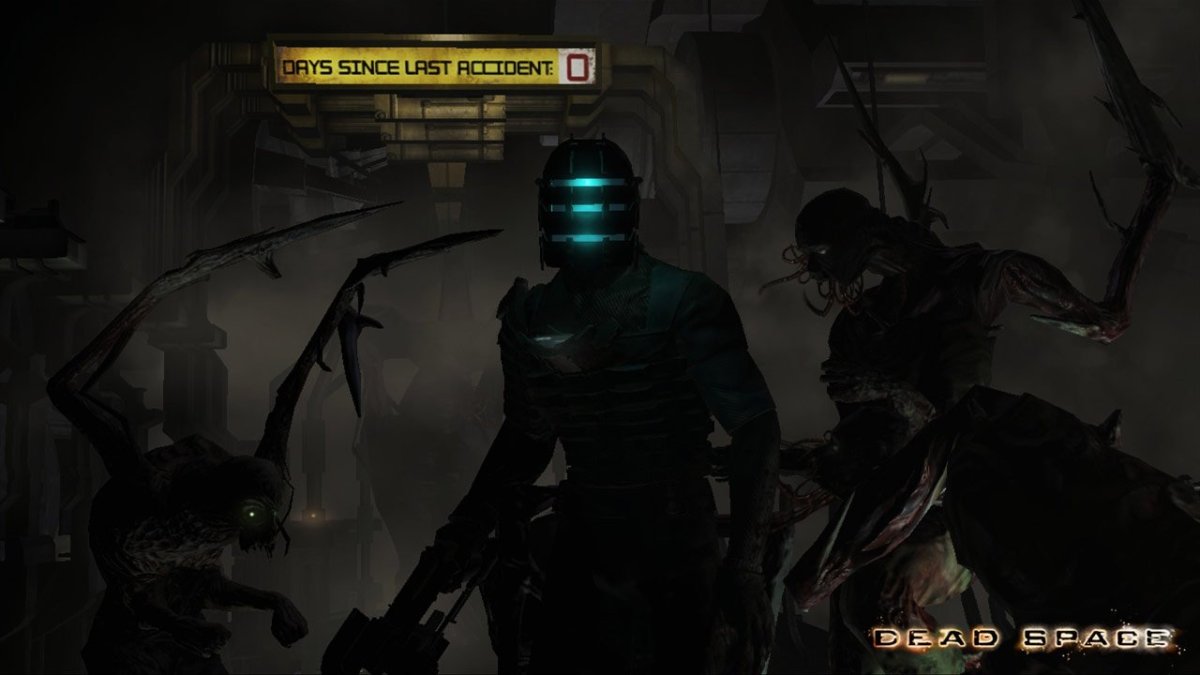Best played with headphones
In a Dead Space developer diary, executive producer Glen Schofield used a good example to illustrate how audio is integral to fear: “We’ve turned off a scary movie — the picture — and just run the audio and it’s very scary, but if you turn off the audio and just watch the movie, it’s not scary at all.”
Sound design is arguably more crucial for horror than any other genre in gaming, and some developers are taking it to the next level. Here are five horror games (or series) that may make you consider muting your sound and playing in silence, not out of distaste but out of fear.
Hellblade: Senua’s Sacrifice

In Ninja Theory’s ambitious horror adventure, protagonist Senua suffers from psychosis causing her to hear voices, and the game uses binaural audio to make you feel like you’re hearing them too. Binaural recording uses two microphones, adding a 3D effect that goes deeper than surround sound by tricking your brain and giving you the sensation that what you’re hearing is in the room with you. If you wear headphones for Hellblade, you’ll hear voices seemingly coming from all around you, both far away and close enough to whisper in your ear, and the effect is chilling.
Observer

Bloober Team’s Observer drops you into people’s minds because, in the dystopian cyberpunk future, cops can hack your brain. While exploring someone’s headspace, you hear sounds reflecting your surroundings, which are essentially manifestations of jumbled-up thoughts. Although Observer doesn’t use binaural audio like Hellblade, it’s still worth playing with headphones to experience the atmospheric whispers and noises that are downright disturbing at times. Observer isn’t a comfortable game, and it uses audio to push that discomfort further and make you hear things you don’t exactly want to be privy to, whether that’s monsters in the basement or somebody’s pent-up sexual frustration.
Silent Hill series

The Silent Hill series is known for its use of audio, and sound designer Akira Yamaoka is something of a legend in the horror gaming community. Yamaoka incorporated industrial noise to turn the series’ music into a sinister cacophony of sound. In an interview with British magazine FACT, Yamaoka described his approach to sound design in the series. “I wanted it to be unpredictable,” he said. “Maybe during a big scare I cut everything out, and maybe if nothing was happening at all there would be a lot of sound.” He also used a variety of instruments, including vocals, to add to the unpredictability. The series’ quieter moments are complemented by melancholy piano pieces and low-key rock songs, but during more intense sequences, Yamaoka ramps up the industrial noise or incorporates otherworldly chanting. There’s a simple reason his music has made such an impact, and it’s that you just don’t hear anything else like it. It effectively sets the mood for a series that elicits strong emotions from fans.
Yomawari: Night Alone and Midnight Shadows

The Yomawari games take the opposite approach. Knowing when not to include music can be an effective way to build fear. In both Yomawari games, you creep around town at night with only a flashlight, hearing nothing but your footsteps on the pavement and occasional atmospheric nighttime sounds, until you cross paths with a ghost. Then your character’s heart begins beating rapidly, an audio choice that is woven into the frenzied gameplay. The Yomawari “heartbeat system” indicates how close you are to a ghost and then acts as your stamina bar when you need to run away. The faster your heart is beating (and the closer you are to a ghost), the harder it is to run. The sound of a rapid heartbeat is a universal indicator of fear, and Yomawari uses this simple sound effect to cut its cuteness with tension.
Dead Space

Dead Space has killer audio all around, but the most interesting piece of its sound design is the innovative use of “fear emitters.” These allowed the audio team to build suspense even if the player didn’t follow an expected route or interact with the environment in a specific way. So for example, instead of having a terrifying sound grow louder as the player walks a long hallway, they attached fear emitters to specific objects or enemies, causing the sound to build as the player gets closer to an object or until they come face-to-face with a creature. The team used fear emitters in conjunction with the soundtrack by creating four layered stereo streams, which are mixed in real time according to how much fear is being emitted in-game. The more fear emitters going off, the louder and more intense the music becomes. It’s a combination of mechanics that shows an astute awareness of player interactivity, and it earned Dead Space several awards for its sound design.
Spooktober is almost over and we only have a couple more days to talk about horror games before we have to start talking about games that cover us with snow — so quick, tell me which spooky sounds have scared you the most!





Published: Oct 29, 2017 06:00 pm